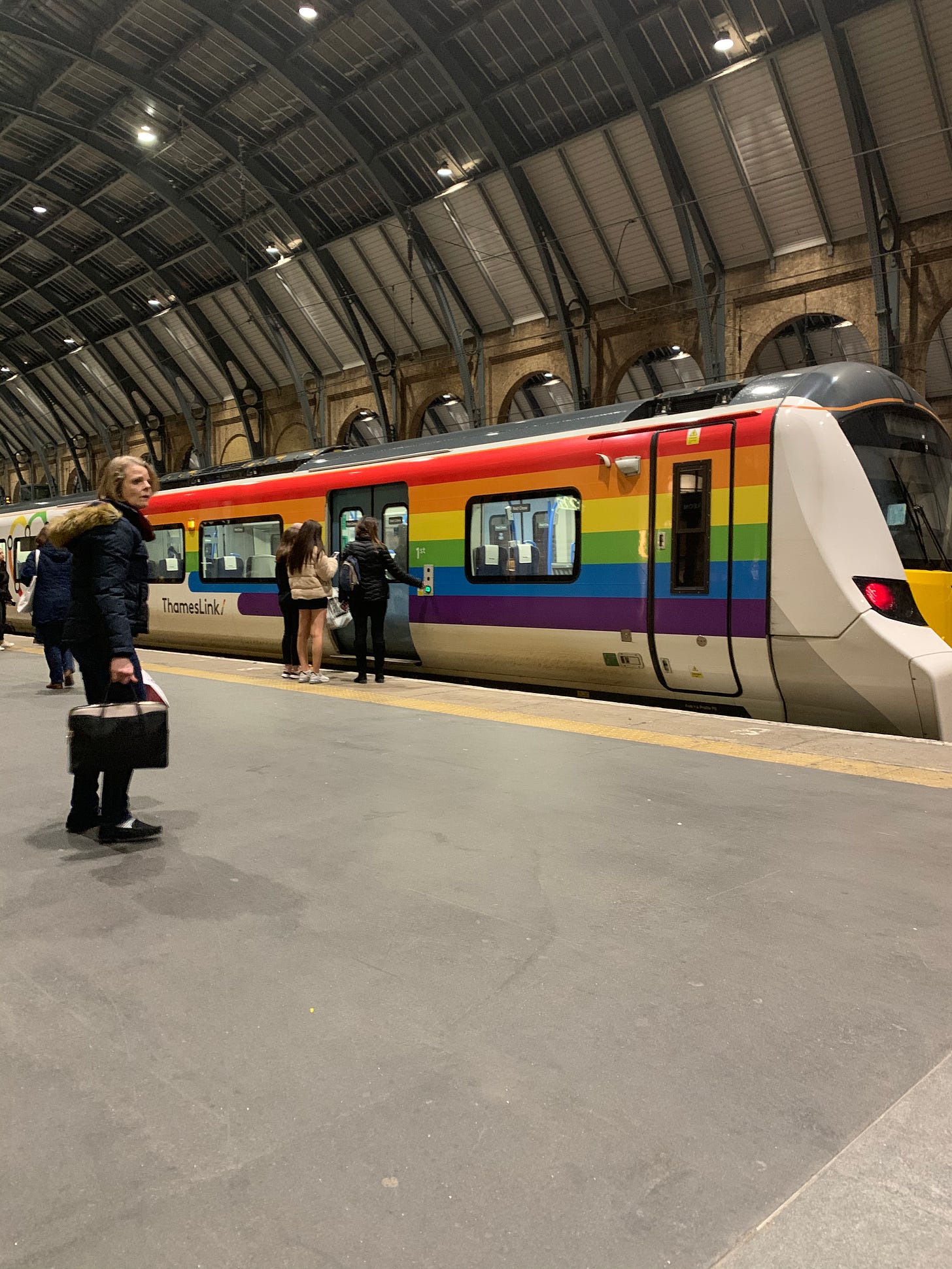You can listen to the main article in this newsletter (read by me).
Hello everyone,
"Why is she always travelling through our station?" I could hear the annoyed conversation between the control room and the man assisting me on the train to London. "Should I ask her?" the man with the ramp responded. "No," said the control room, which didn't stop the man with the ramp from asking me anyway.
I didn't give him a proper answer because I didn't think I had to explain my travel decisions just because I needed a ramp. And it's not an easy answer. But the answer might be interesting for you because it shows how disabled people make travel decisions, even if it's not the most obvious choice for someone who is non-disabled.
I came from a business trip to the East Midlands and started my train journey in Nottingham. I have several options for stations. I usually choose Nottingham because there is an accessible express bus to the station. East Midlands Parkway is closer but has no public transport links, and accessible taxis are difficult to get to in this area.
Nottingham has a friendly assisted travel team that is not bothered if I Turn Up and Go. That means I travel unbooked because I never know when I'll be back, if the bus is stuck in traffic, etc. It avoids unnecessary stress.
Good PTI and level boarding
East Midlands Railway operates regional trains to Norwich from Nottingham. These old trains have comfortable wheelchair spaces and a good platform-train interface (PTI). The step is low, and the ramp is less steep, so nobody has to push me; I roll up the ramp, and that's it. Some of their trains have very steep ramps, including the ones that go directly to London. I can do it with help, but I wouldn't say I like it very much.
So I took the Norwich train to Peterborough and got on a Thameslink train to London Bridge. London Bridge has level boarding on platform 4/5, so I don't need any assistance there. The Thameslink trains are air-conditioned. The wheelchair space is huge and even has a foldable table.
Not St Pancras
If I take a direct train to London from Nottingham, I would arrive at St Pancras, but St Pancras has assistance issues; I often have to wait to get off, and the staff could be friendlier. On top of that, the train ramp frequently ends in front of a wall, so I can't use the door next to the wheelchair space and have to roll through the very narrow aisle to get to another door. It's often a hassle. So I avoid St Pancras and go to London Bridge with level boarding instead. I have to go there anyway to catch the train to my home station.
Yes, I could change at St Pancras and go to London Bridge from there, and it would save me some time, but the overall journey experience wouldn't be better. And the lift at St Pancras down to the Thameslink trains could be more reliable, another reason to avoid St Pancras.
These are the reasons why I travelled the way I did, and I often make decisions like that to improve accessibility for myself and reduce stress when travelling, even if it takes longer.
As a frequent flyer, I often travelled via Zurich because they had the best ambulifts, and their assisted travel team worked like a Swiss watch. So, if I had to change flights anyway, I would do it in Zurich, not in Frankfurt, even though these were more common routes. So Peterborough is my new Zurich. It's a compliment to the team that I travel there. I hope they can appreciate it next time.
Some interesting links
Bus accessibility in Brighton and Hove, and the Managing Director's very encouraging statement: “‘How can we afford to not prioritise accessibility?’.
Airbus thinks cabin concepts that would accommodate one or two wheelchair users in-flight via wheelchair securement systems will not adequately address the issue.
Canada’s Chief Accessibility Officer, Stephanie Cadieux, has provided an update on progress made since Canada’s first-ever National Air Accessibility Summit.
Something to watch
Paralympian Hannah Cockroft demands that life in the UK be made more accessible. She mentions trains and that she still needs a ramp and is expected to book.
Some final words
The Accessible Link is a reader-supported publication. So, if you like what you’re reading, consider to
As a paid subscriber you will receive an additional edition every two weeks with best-practice tips on improving accessibility in your organisation.
Who is writing this newsletter?
I’m Christiane Link, and I improve the customer experience in aviation, transport, and travel. I worked as a journalist for over two decades and travelled extensively for business and leisure. I’m a wheelchair user.
Work with me
Whether you're a Customer service director, a Head of Customer Experience, a corporate Accessibility manager, a DEI leader, a transport planner, or a disabled employee resource group member, I can help you to make your organisation more inclusive. You can book me for speaking engagements or hire me as a consultant for your accessibility or DEI strategy, communications advice and other related matters. I have worked for airlines, airports, train operators, public transport providers, and companies in other sectors.
If you want to read more from me, follow me on LinkedIn, Twitter, Bluesky or Mastodon. You can also reply to this email if you want to contact me.
.






